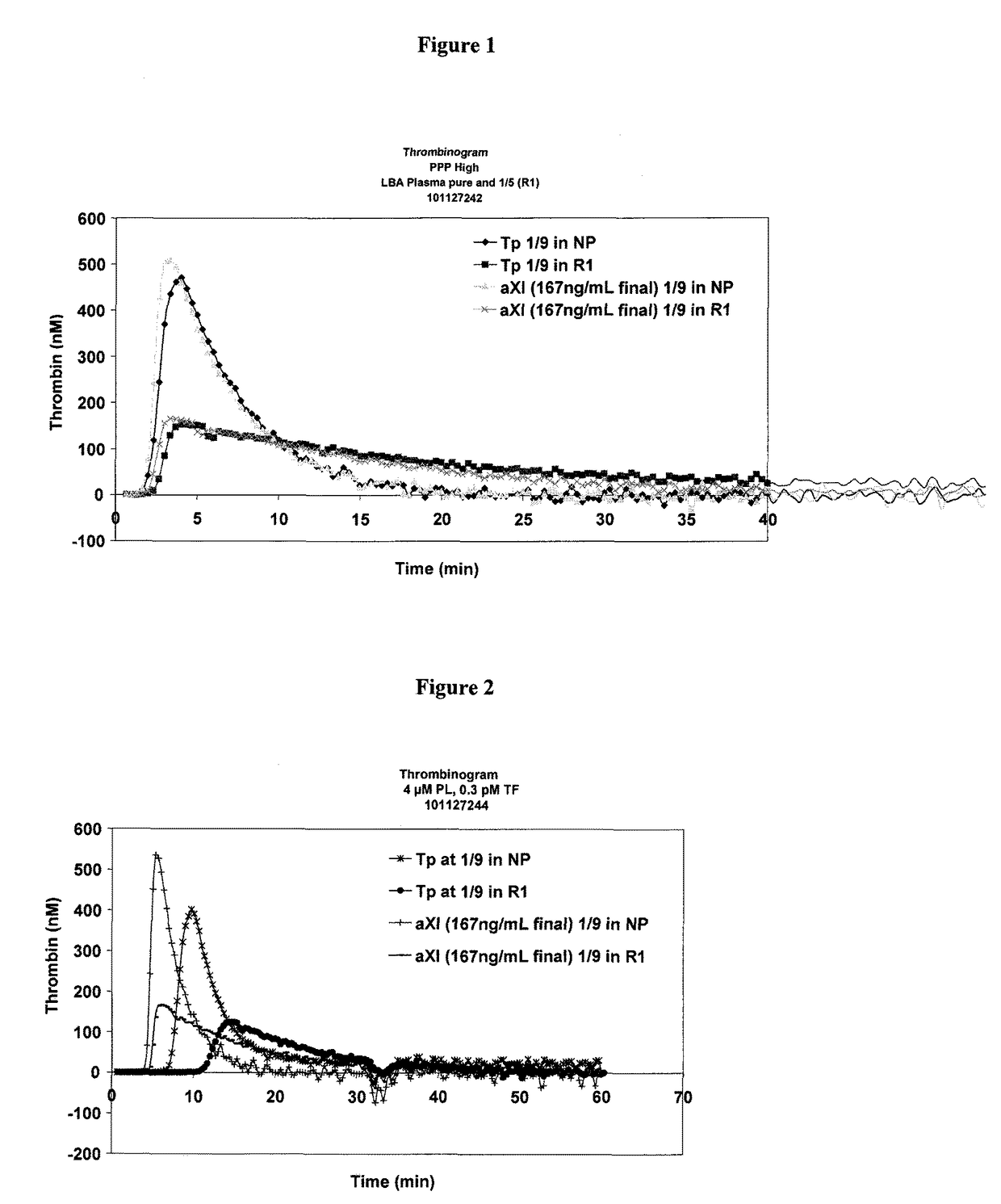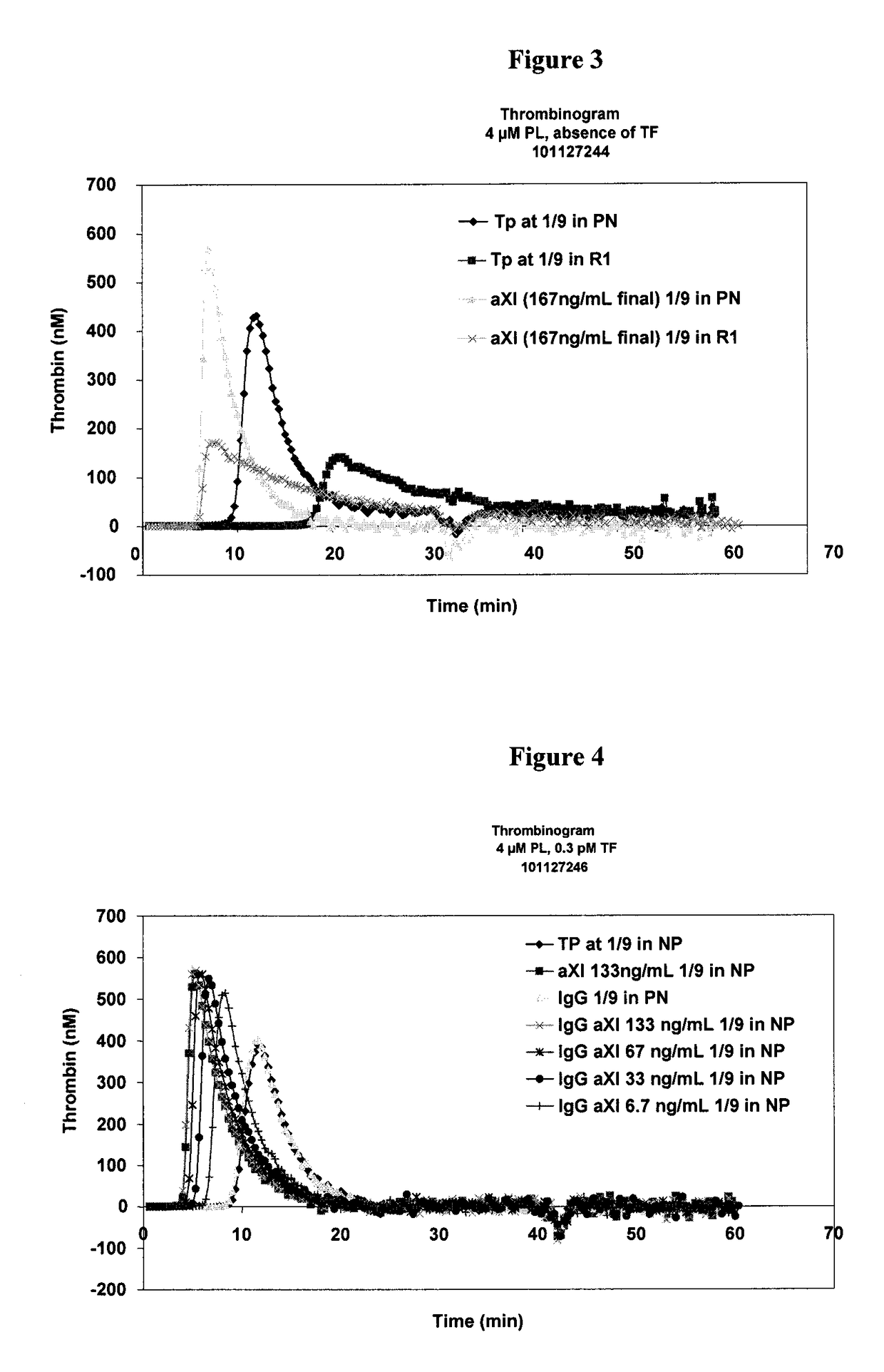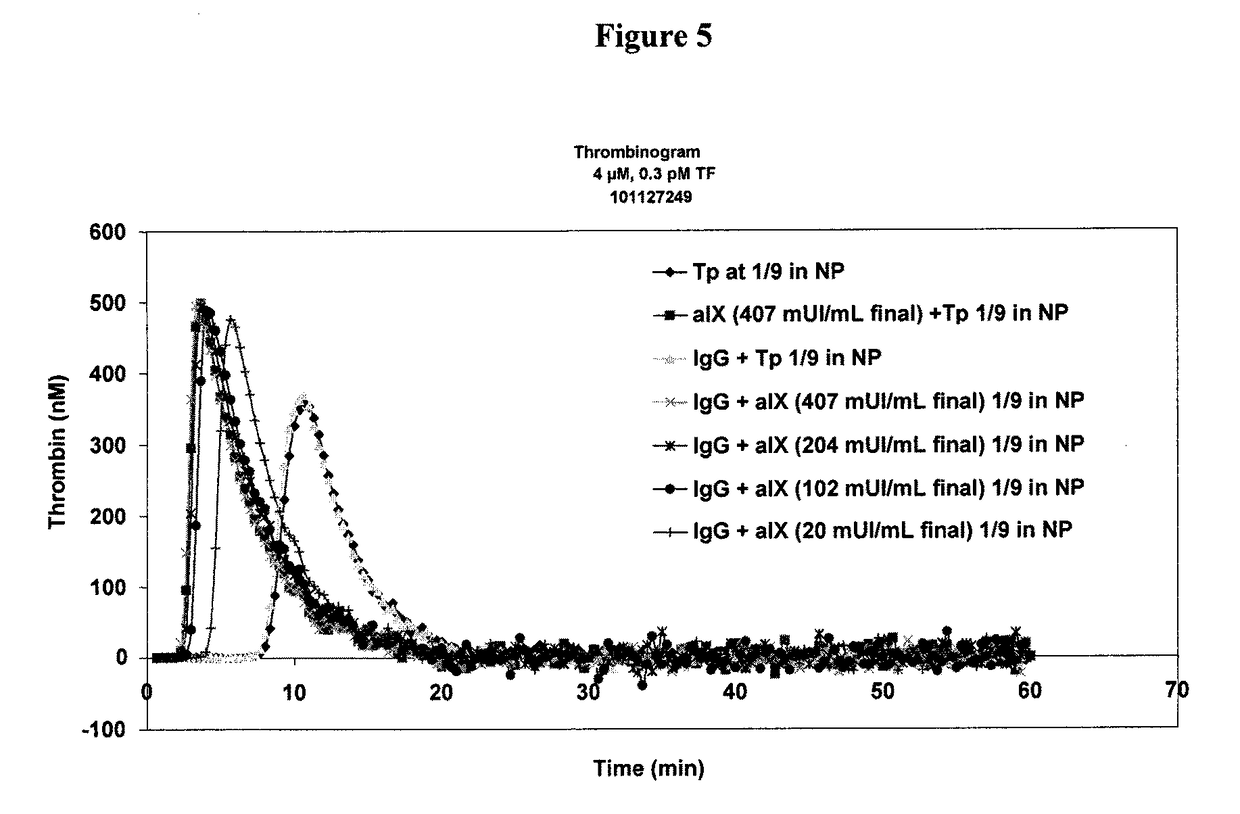Determination of the thrombogenic power of human immunoglobulins
a technology of immunoglobulin and thrombogenesis, which is applied in the direction of biochemistry apparatus and processes, instruments, material analysis, etc., can solve the problems of arterial occlusion with ischaemia or even infarction, serious side effects, and even infarction
- Summary
- Abstract
- Description
- Claims
- Application Information
AI Technical Summary
Benefits of technology
Problems solved by technology
Method used
Image
Examples
example 1
tion of the Thrombogenic Power of a Sample
[0116]Protocol 1 for Determining the Thrombogenic Power of a Sample to be Tested[0117]Equipment: CAT system (Stago) Reagents: Stago[0118]Normal Plasma: pool of frozen plasma (internal)[0119]Preparation of the samples: 1 volume of product for 8 volumes of NP or of NP at ⅕th in dilution buffer (R1).[0120]Experimental conditions:[0121]80 μL Preparation. +20 μL PPP-reagent High (4 μM phospholipids and 20 pM TF final)[0122]20 μL FluCa-reagent added by the device[0123]Fluorescence: λ excitation=390 nm, λ emission=460 nm
[0124]Protocol 2 for Determining the Thrombogenic Power of a Sample to be Tested[0125]Equipment: Fluoroscan / CAT system (Stago) Reagents: Stago[0126]Normal Plasma (NP): Pool of frozen plasma (internal) or Unicalibrator (Stago)[0127]Preparation of the samples: 1 vol of product per 4 or 8 vol of NP[0128]reaction mixture: 500 μL MP-reagent taken up with 0.5 mL of water+300 μL PRP-reagent+200 μL of dilution buffer[0129]Experimental condi...
example 2
[0136]The thrombogenic power of aFXI in a pool of normal plasma or in a pool of diluted plasma is determined according to Protocol 1 (FIG. 1) or Protocol 2 (FIG. 2), respectively described above.
[0137]Protocol 2, carried out at a low final concentration of tissue factor, makes it possible to obtain a result more sensitive than that obtained by Protocol 1, using a high final concentration of tissue factor.
example 3
of Tissue Factor in the Reaction Medium
[0138]The thrombogenic power of aFXI in a pool of normal plasma or in a pool of diluted plasma is determined, according to Protocol 2, in a reaction medium containing 0.3 pM of tissue factor (FIG. 2) or without tissue factor (FIG. 3).
[0139]The variability of the responses obtained in the reaction medium without TF is greater than that in the reaction medium with TF. In the absence of TF, the specificity of this response which occurs at later times (>20 min) is not assured.
PUM
 Login to View More
Login to View More Abstract
Description
Claims
Application Information
 Login to View More
Login to View More - R&D
- Intellectual Property
- Life Sciences
- Materials
- Tech Scout
- Unparalleled Data Quality
- Higher Quality Content
- 60% Fewer Hallucinations
Browse by: Latest US Patents, China's latest patents, Technical Efficacy Thesaurus, Application Domain, Technology Topic, Popular Technical Reports.
© 2025 PatSnap. All rights reserved.Legal|Privacy policy|Modern Slavery Act Transparency Statement|Sitemap|About US| Contact US: help@patsnap.com



